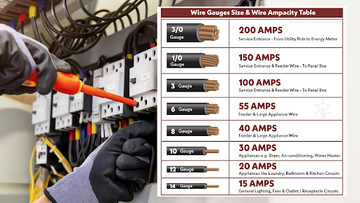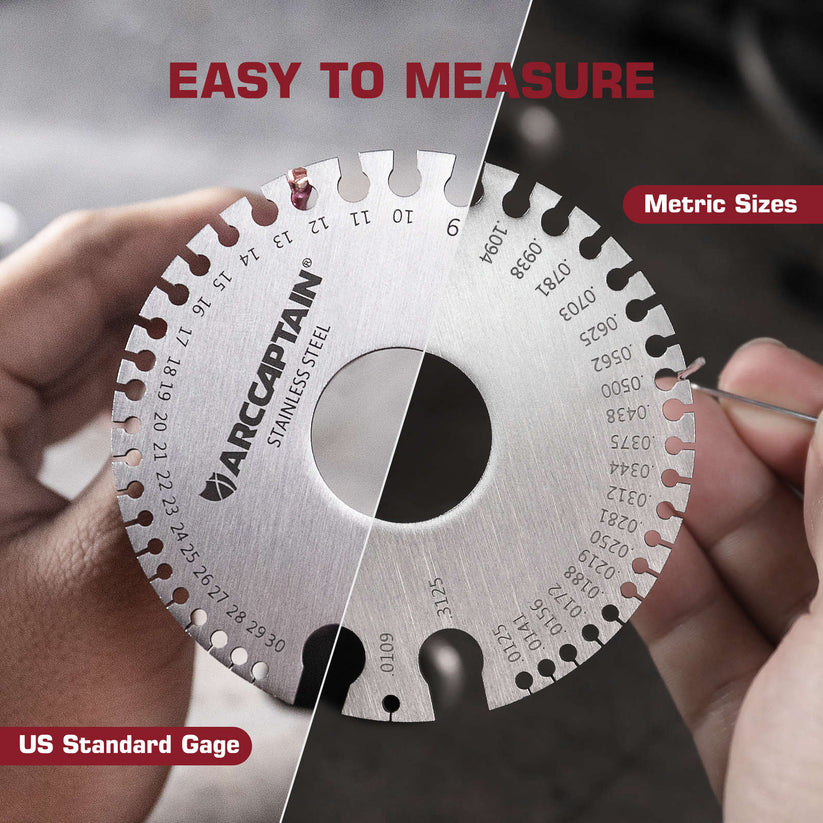
Choosing the right wire size can make all the difference in how safely and efficiently electricity flows through your circuit. A wire gauge amp chart helps you match the correct wire thickness to the amount of current (amps) your system needs.
Whether you’re wiring a home, a workshop, or a car audio system, understanding wire gauge and amp ratings keeps your setup safe and reliable.
Want to make wiring easier and safer? Read on to discover how to use a wire gauge amp chart the right way and find the perfect wire size for your project.
What Is a Wire Gauge Amp Chart and Why It Matters
A wire gauge amp chart is a quick reference tool that shows how many amps each wire size (or gauge) can handle safely. The chart is based on the American Wire Gauge (AWG) system, where smaller numbers mean thicker wires.
Using the right wire size prevents overheating, voltage drop, and even electrical fires. The chart helps you pick the correct wire for your circuit’s current load, ensuring everything runs smoothly.
Understanding Wire Gauge and Ampacity
Ampacity means the maximum amount of current a wire can carry without getting too hot. The thicker the wire, the more amps it can handle. For example, a 14-gauge wire can handle about 15 amps, while a 10-gauge wire can handle up to 30 amps.
Temperature, insulation type, and wire length also affect ampacity. Longer wires lose more voltage, so you may need a thicker wire for long runs.
The National Electrical Code (NEC) recommends limiting voltage drop to 3% on branch circuits and 5% total for feeders and branch circuits combined (NEC Informational Note to 210.19(A)(1)).
📌 Check out MIG Welding Wire Speed & Voltage Chart to understand how current and wire size work together in practical applications.
Wire Gauge Amp Chart (AWG) – Reference Table
The following wire gauge amp chart applies to copper conductors with 60°C insulation (typical for NM-B cable). Ampacity may vary for aluminum wire or higher temperature insulation types like THHN.
If you’re using aluminum wire, reduce the amp rating by about 20% or refer directly to NEC Table 310.16 for exact values.
|
Wire Gauge (AWG) |
Maximum Amps (Copper) |
Common Uses |
|---|---|---|
|
18 AWG |
10 amps |
Small electronics, LED lights |
|
16 AWG |
13 amps |
Extension cords, small tools |
|
14 AWG |
15 amps |
Lighting circuits |
|
12 AWG |
20 amps |
Outlets, small appliances |
|
10 AWG |
30 amps |
Water heaters, dryers |
|
8 AWG |
40 amps |
Air conditioners, ovens |
|
6 AWG |
55 amps |
Large appliances, subpanels |
|
4 AWG |
70 amps |
Feeders, heavy equipment |
|
2 AWG |
95 amps |
Main service feeders |
|
1/0 AWG |
150 amps |
Large service panels |
|
2/0 AWG |
175 amps |
High-load systems |
|
4/0 AWG |
230 amps |
Main power connections* |
*Ampacities above 1/0 AWG are based on the 75°C column of NEC Table 310.16, commonly used for service entrance and feeder conductors.
Always verify wire sizes and amp ratings with your local electrical code authority, as requirements can vary by location.
How to Read and Use a Wire Gauge Amp Chart

A wire gauge amp chart is simple to use once you understand a few basics.
- Find out how many amps your device or circuit will draw.
- Match that number to the correct wire gauge on the chart.
- If your wire run is long, go one size thicker to reduce voltage drop.
For example, if your circuit requires 20 amps, you’d choose a 12-gauge wire for most home setups. For longer distances, you might use a 10-gauge wire to stay safe.
📌 Browse Stick Welder Settings Chart for a simple breakdown of how current and electrode settings work together.
Common Wire Gauges and Their Amp Ratings
Each wire gauge has a specific amp capacity and is suited for certain uses.
14 Gauge Wire – 15 Amps
Best for lighting and small outlets. Never use 14-gauge wire on a 20-amp circuit.
12 Gauge Wire – 20 Amps
Common for most household outlets and small appliances.
10 Gauge Wire – 30 Amps
Used for large appliances like water heaters or clothes dryers.
8 Gauge Wire – 40 Amps
Perfect for heavy-duty equipment such as air conditioners.
6 Gauge Wire and Thicker – 55 Amps or More
Used for subpanels, welders, and high-power systems.
Check Related Products
📌 Discover How to MIG Weld Metals of Different Thicknesses to learn how wire thickness affects performance.
Why Choosing the Right Wire Gauge Matters
Picking the correct wire gauge isn’t just about performance—it’s about safety.
If the wire is too small for the current, it can overheat and cause fires. If it’s too thick, it might be harder to install and unnecessarily expensive.
Always size your wire according to the chart and the circuit’s total amperage, and confirm that your breaker size matches your wire capacity.
Wire Gauge Amp Chart for Different Applications

Different setups require different wire sizes. Here’s how the chart applies to common uses.
Home Electrical Circuits
Most home outlets use 12-gauge wire for 20 amps. Lighting circuits often use 14-gauge wire for 15 amps.
Automotive and Car Audio Systems
Car systems run on 12 volts, so voltage drop matters more. Thicker wires are better for long runs to amplifiers or subwoofers.
Solar and Battery Systems
Solar setups often use larger wires because of high current and distance between panels and batteries.
📌 Check out How Many Watts Does a MIG Welder Use to learn how power consumption affects efficiency and wire selection.
How to Calculate Wire Size from Amps
You can estimate wire size using a wire gauge amp chart or a simple rule of thumb:
- Up to 15 amps = 14 AWG
- Up to 20 amps = 12 AWG
- Up to 30 amps = 10 AWG
For more precise results, use an online calculator or consult an electrician. Always round up to the next thicker wire if you’re unsure.
Conclusion
A wire gauge amp chart is one of the most important tools for anyone working with electricity. It helps you choose the right wire size for your amps, keeping your circuits safe and efficient.
Always follow the chart, consider the length of your run, and double-check local electrical codes before starting any wiring project.
With the right knowledge and the right tools, you can make every wiring job safer and more reliable.
FAQs About Wire Gauge Amp Charts
How many amps can each gauge wire handle?
Each wire gauge has a specific amp limit. For example, 14-gauge wire handles up to 15 amps, 12-gauge handles up to 20 amps, and 10-gauge handles up to 30 amps. Always check a wire gauge amp chart before wiring to ensure safety and compliance with electrical codes.
How do you determine the wire gauge for an amp?
Start by finding out how many amps your circuit or device draws. Then, use a wire gauge amp chart to find the wire size that safely carries that current. For longer runs, choose a thicker wire to prevent voltage drop.
What happens if you use 14 gauge wire on a 20 amp circuit?
Using 14-gauge wire on a 20-amp circuit can cause overheating and possible fire hazards. The wire isn’t thick enough to handle the current safely. Always match your wire size to the circuit’s breaker rating.
What happens if a wire gauge is too big?
Using a wire that’s too thick isn’t dangerous, but it can be harder to work with and more expensive. It may also not fit easily into connectors or terminals designed for smaller wires.
How do you calculate wire size to amps?
You can calculate wire size using Ohm’s Law and voltage drop formulas, but most people use a wire gauge amp chart for convenience. The chart provides safe amp limits for each wire size, simplifying the process.
Is thicker wire always better?
Thicker wire can carry more current and reduce voltage drop, but it’s not always necessary. Using wire that’s too large increases cost and can make installation more difficult. The best choice is the wire size that matches your circuit’s amp load.


